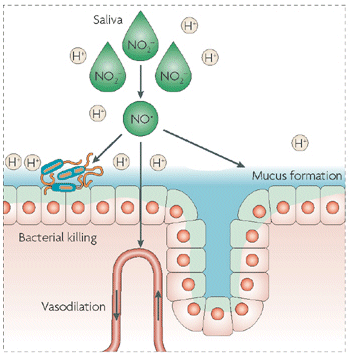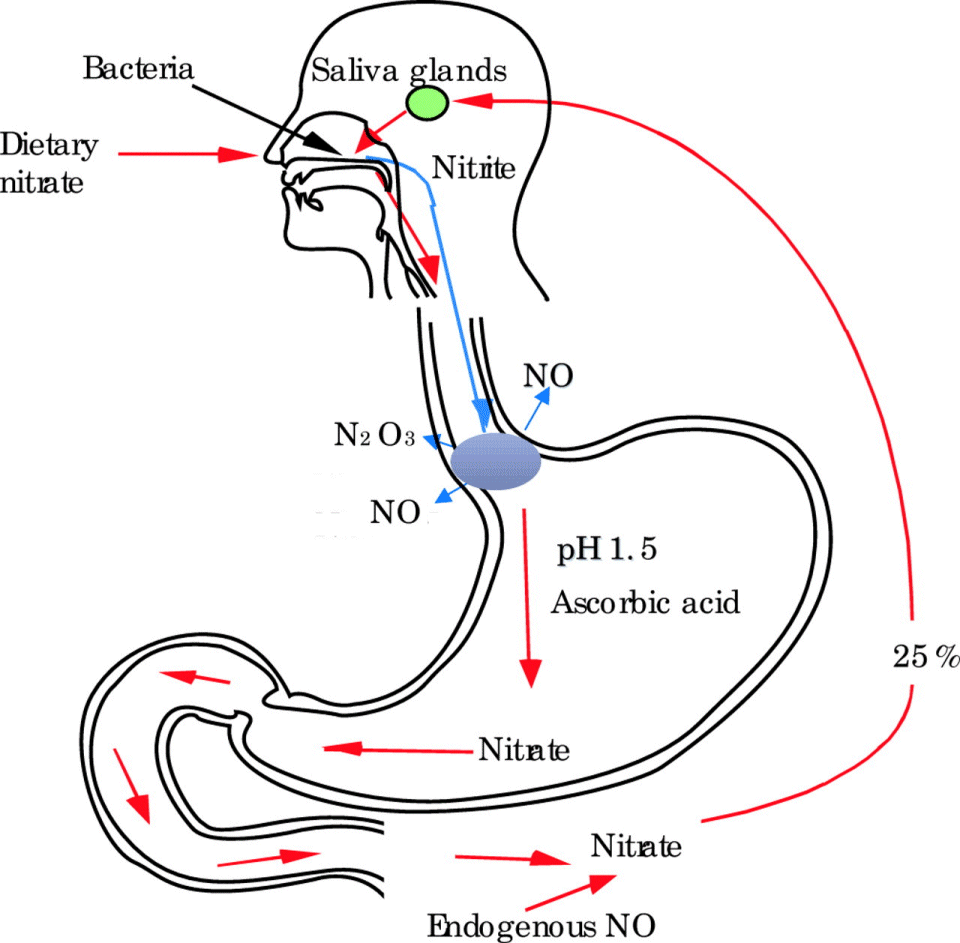| Hint | Food | 맛과향 | Diet | Health | 불량지식 | 자연과학 | My Book | 유튜브 | Frims | 원 료 | 제 품 | Update | Site |
|
첨가물 ≫ 발색,표백 ≫ 아질산 아질산 침에서 역할 : 유해균 억제 - 아질산 역할 - 아질산 개요   A survey is given on the occurrence of nitrate and nitrite in human saliva and the influence of the dietary nitrate intake. Nitrate, after its absorption in the upper gastrointestinal tract, reaches the salivary glands via the blood circulation where it is secreted into the oral cavity and partially reduced to nitrite by the oral microflora. There is a linear relationship between the amounts of nitrate ingested and amounts of nitrate and nitrite found in saliva. The ability of the oral microflora to reduce nitrate to nitrite depends on he individual ages. Mean salivary nitrite was found to increase from well below 1 ppm in infants of up to 6 months to about 7 ppm in adults. a remarkably different situation has been found in areas of high esophageal cancer incidence in Iran: although dietary intake of nitrate and nitrite is very low, nitrite levels in saliva, especially in children of this area tend to be much higher than those in children of western European countries. |
||||
|
|
|||